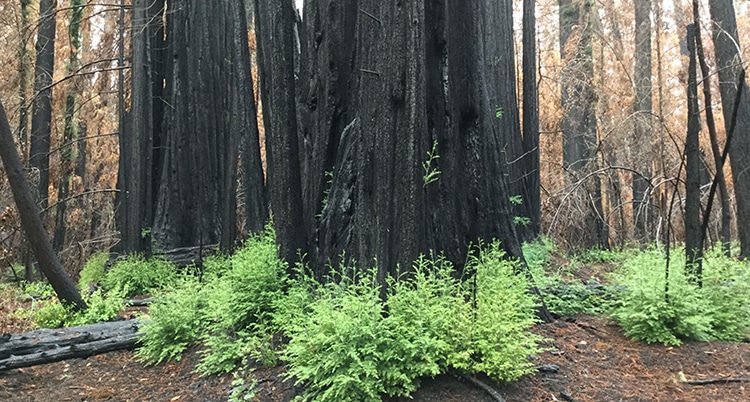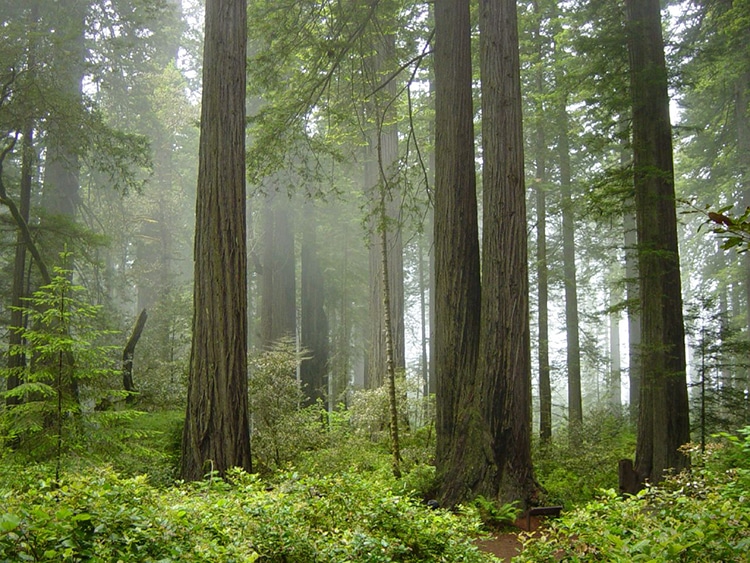
The re-sprouting redwoods. (Photo: LISSY ENRIGHT/USFS photo)
In August of 2020, a horrific fire swept through California’s Big Basin Redwoods State Park. Ignited by lightening, the fire was unprecedented in the scale of damage it wreaked on the ancient trees. It left behind enormous charred trunks in what had once been a lush forest. Concerned scientists thought it might be the end of these trees as we knew them. But upon returning to the scene months later, researchers discovered the bereft trees had used long-stored energy to grow buds long hidden within their bark. These green sprouts demonstrate the resilience of the redwood trees.
The research was recently published in Nature Plants, and it has surprised many experienced scientists. When the redwoods lost their greenery to the fire’s abnormally tall flames, they lost their source of energy. The trees collect sunlight to photosynthesize into sugars and carbohydrates which in turn are used to help the plant grow, or are stored for future exertion. Melissa Enright of the U.S. Forest Service, one of the paper authors, decided to wrap 60 burnt tree trunks in black plastic to prevent them from using new light. This caused the trees to turn toward their inner reserves.
With time, green sprouts emerged from the bark, although still petite compared to the leaves and branches lost in the fire. Radiocarbon testing showed that these sprouts grew from energy that was created and stored within the tree up to 21 years prior to the fire. The energy was used by buds hiding within the trees. Scientists know these buds begin to form within the tree as it grows, and can lay dormant for ages. The sprouts which burst forth after the fire may be up to 1,000 years old, given coastal redwoods themselves can live over two millennia.
“They allow these trees to be really fire-resilient because they have this big pool of old reserves to draw on,” Drew Peltier, another author, says. However, there is still ample reason to be concerned whether the trees will properly rebound. The sprouts are much smaller than the former forest cover, and the trees require energy. “The fact that the reserves used are so old indicates that they took a long time to build up,” says Susan Trumbore, a scientist at the Max Planck Institute for Biogeochemistry who is not involved in the study. “Redwoods are majestic organisms. One cannot help rooting for those resprouts to keep them alive in decades to come.”
Redwood trees have responded to fire damage by releasing buds that had been hidden within their bark for a thousand years as “stored energy.”

Photo: Michael Schweppe via Wikimedia Commons
h/t: [Science]
Related Articles:
Earth Is at a “Tipping Point” as Study Shows Its “Vital Signs” Are at a Critical Level
New Plant Hardiness Map Confirms Gardener Suspicions That the U.S. Has Gotten Warmer
Kenya Celebrates Its First National Tree Planting Holiday by Planting 100 Million Seedlings
